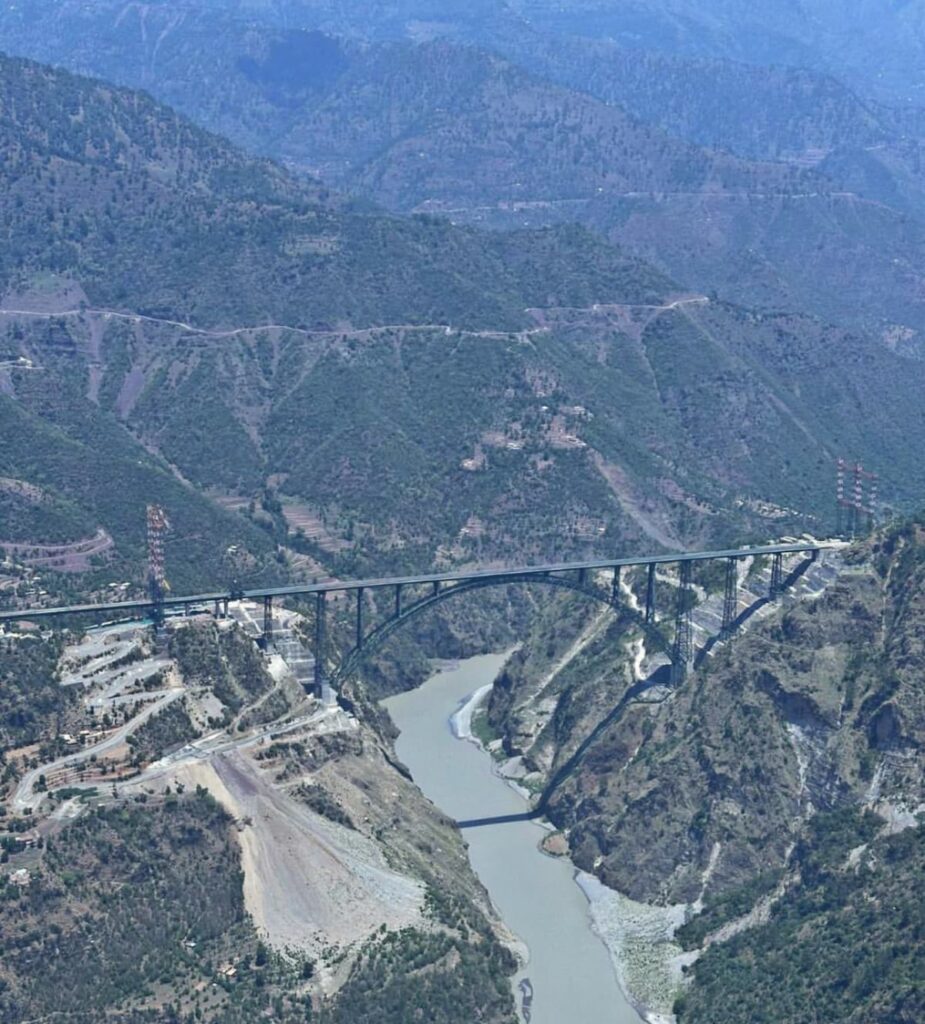Chenab Bridge Marks Historic Engineering Feat
The world’s highest railway bridge was inaugurated Friday in India-administered Jammu and Kashmir, an engineering marvel that sits 359 meters (1,180 feet) above the Chenab River—making it 29 meters taller than the Eiffel Tower. The arched Chenab Bridge, decades in the making and costing more than $160 million, spans 1,315 meters (4,314 feet) across a remote mountain valley. The structure is part of a broader infrastructure push by the Indian government to integrate the Himalayan region more fully with the rest of the country.
The opening ceremony was led by Indian Prime Minister Narendra Modi, who visited the disputed territory for the first time since a deadly flare-up with Pakistan in April. That brief conflict erupted after a massacre of tourists in the region, which New Delhi blamed on Islamabad. Pakistan denied involvement, but the two nuclear-armed neighbors exchanged artillery fire, drones, and missiles over four tense days.
The inauguration of the Chenab Bridge also marks a key milestone in the Udhampur-Srinagar-Baramulla Rail Link project. The railway line, which now connects key cities in India-administered Kashmir to the rest of the country, is expected to significantly enhance mobility, trade, and integration across the region.
Strategic and Political Undertones
The launch of the railway infrastructure carries deep political significance for Modi’s government. Since coming to power in 2014, the prime minister has prioritized nationalism and modernization as pillars of his political agenda. Projects like the Chenab Bridge are not only infrastructural milestones but also instruments of political influence and regional integration.
Modi’s Hindu-nationalist administration revoked Article 370 of the Indian Constitution in 2019, stripping Jammu and Kashmir of its semi-autonomous status. The region was reorganized into two separate union territories—Jammu and Kashmir, and Ladakh—bringing it under direct control from New Delhi. The government framed the move as a necessary step to ensure political stability, combat corruption, and foster economic development.
India-administered Kashmir remains one of the world’s most militarized zones. The region is claimed in full by India, Pakistan, and China, though each country controls only parts of it. For Modi’s Bharatiya Janata Party (BJP), the completion of the Chenab Bridge and related rail projects is being portrayed as a symbolic and strategic triumph, emphasizing the unity and sovereignty of India.
Infrastructure Expansion Amid Environmental Concerns
India’s aggressive infrastructure expansion in mountainous regions has raised concerns among environmentalists. Critics argue that large-scale construction projects such as the Chenab Bridge and new highways could endanger fragile ecosystems and exacerbate climate-related risks.
In November 2023, Modi’s Char Dham Highway project—an extensive road network meant to improve connectivity in the Himalayan state of Uttarakhand—faced criticism after an under-construction tunnel collapsed. The incident trapped dozens of workers for several days, sparking public outcry and renewed scrutiny over safety and environmental impacts.
Similar concerns have emerged elsewhere. In August 2023, over a dozen workers were killed when a bridge under construction collapsed in the northeastern state of Mizoram. That same summer, a four-lane bridge across the River Ganges in Bihar collapsed for the second time in a year, fueling questions about construction standards and oversight.
Despite these setbacks, Modi’s administration has poured billions into modernizing India’s outdated transport infrastructure. The aim is to transform the country into a developed nation by 2047, a goal that remains central to Modi’s vision for India’s future. The Chenab Bridge now stands as a powerful visual symbol of that ambition, promising enhanced connectivity and integration in one of the most geopolitically sensitive areas of South Asia.
New Era of Connectivity in Kashmir
The inauguration of the rail link comes at a time of heightened tension and scrutiny. Modi’s presence in Srinagar—India-administered Kashmir’s largest city—was carefully choreographed to signal the central government’s commitment to the region’s development. A decorated Vande Bharat passenger train at the Srinagar railway station served as the ceremonial backdrop to the prime minister’s speech.
For the residents of Jammu and Kashmir, the completion of the railway connection brings the promise of greater mobility and economic opportunity. Whether these infrastructure projects can also address deeper political grievances in the region remains to be seen. What is certain, however, is that the Chenab Bridge has opened a new chapter in the complex and contested history of Kashmir.


